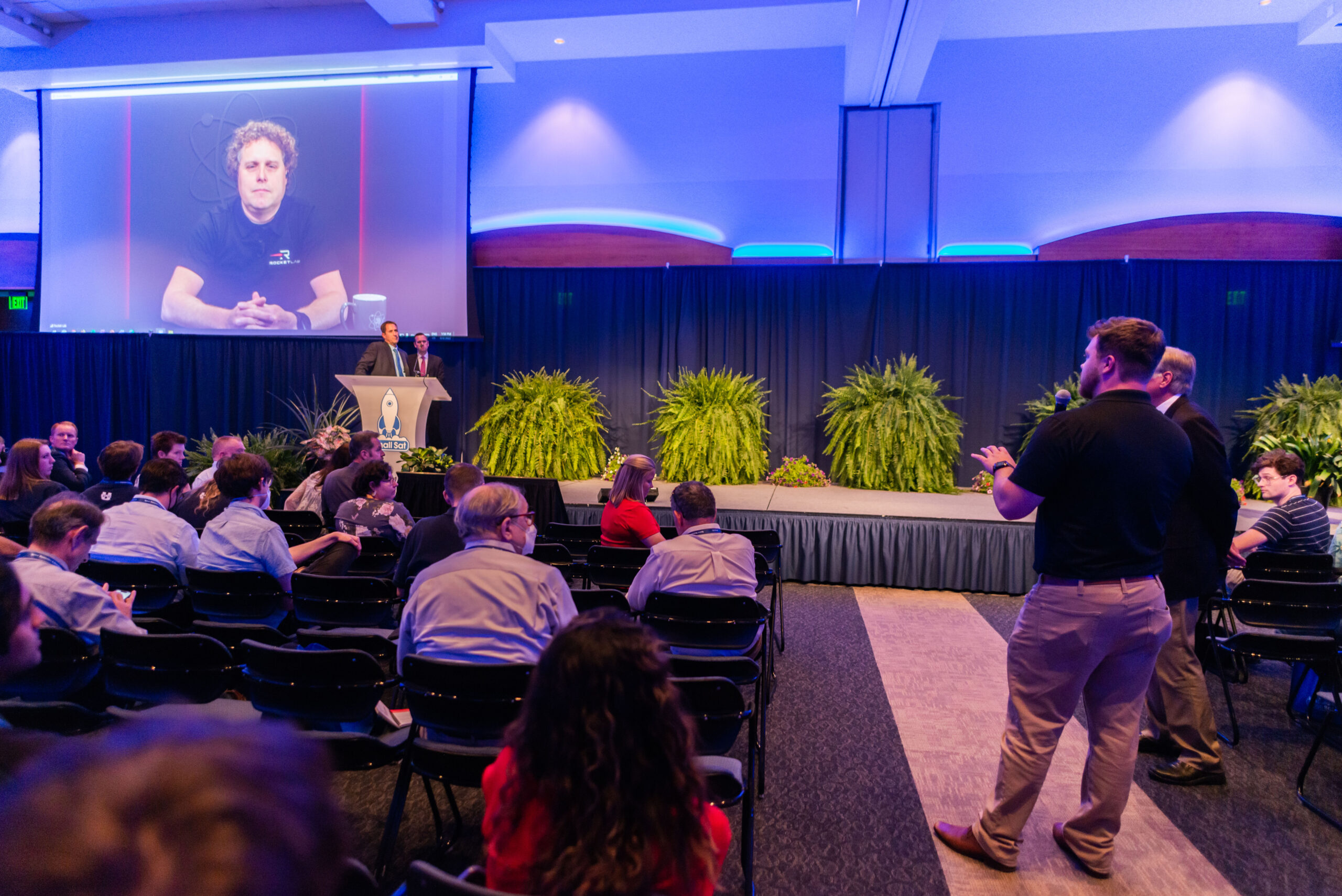
LOGAN, Utah — Rocket Lab’s launch of a NASA lunar cubesat mission lived up to its name, serving as a capstone for the company’s efforts to develop end-to-end space systems and interplanetary missions, according to its chief executive.
Giving a keynote at the Small Satellite Conference here Aug. 8, Peter Beck said the company’s work on both small launch vehicles and spacecraft came together with the June 28 launch of NASA’s Cislunar Autonomous Positioning System Technology Operations and Navigation Experiment (CAPSTONE) mission to the moon.
Rocket Lab provided the launch on its Electron rocket as well as the Lunar Photon kick stage that performed a series of maneuver to place CAPSTONE on a ballistic lunar trajectory.
The mission came as Rocket Lab expanded from being strictly a small launch vehicle developer to one that also developed spacecraft and components for them, in part through a series of acquisitions. “Where all this really came together is when we did the CAPSTONE mission,” he said. “We not only just needed a rocket, we needed to build a spacecraft as well.”
The CAPSTONE mission pushed the limits of Electron’s performance. The vehicle was originally designed to place 150 kilograms into low Earth orbit, but CAPSTONE and Lunar Photon weighed 320 kilograms at launch. “Every gram was accounted for,” he said, including the decision not to include onboard cameras usually flown on Electron to conserve mass. “We really pushed that vehicle as hard as we could.”
Rocket Lab is continuing to operate Lunar Photon more than a month after it deployed CAPSTONE. The spacecraft is currently about 1.3 million kilometers from Earth, he said, and will swing back to Earth later in the month.
The spacecraft still has 10-15% of its propellant remaining. “As it scoots past Earth,” Beck said, “we’ll have a crack at doing something cool with it and see how far into the solar system we can get with it.”
That test will support Rocket Lab’s future plans for deep space smallsat missions, including a privately-funded mission to Venus and building the two spacecraft for NASA’s ESCAPADE Mars orbiter mission. “We’re using this opportunity to learn what it’s going to take to get to Venus and other destinations,” he said.
He reiterated past comments that the CAPSTONE mission demonstrated the feasibility of low-cost interplanetary smallsat missions. “What we intended to do with the Lunar Photon spacecraft is to really lower the barrier for interplanetary missions,” he said. “The biggest thing that came out of that was there’s a spacecraft now that, for some tens of millions of dollars, that you can buy and go and visit an asteroid, go and visit the moon, go and visit another planet. That’s never existed before.”
Beck, speaking remotely from New Zealand after illness prevented him from coming to the conference in person, touched on another key Rocket Lab initiative, creating a reusable version of the Electron booster. The company attempted to catch the booster with a helicopter on a May 2 launch, but unexpected loads forced the helicopter to release the booster seconds after grappling it.
The company has been “somewhat opportunistic” with making recovery attempts, he said, depending on the requirements for each mission. “You shouldn’t need to wait long” for the next recovery attempt, he said, but was not more specific.
He was confident that Rocket Lab will be able to soon recover and reuse the booster, given the progress made so far. “The biggest learning from the last one is that it is going to work,” he said.
"low" - Google News
August 09, 2022 at 04:11AM
https://ift.tt/yOarsef
Beck: CAPSTONE demonstrates feasibility of low-cost interplanetary smallsats - SpaceNews
"low" - Google News
https://ift.tt/3tqrslp
Bagikan Berita Ini














0 Response to "Beck: CAPSTONE demonstrates feasibility of low-cost interplanetary smallsats - SpaceNews"
Post a Comment